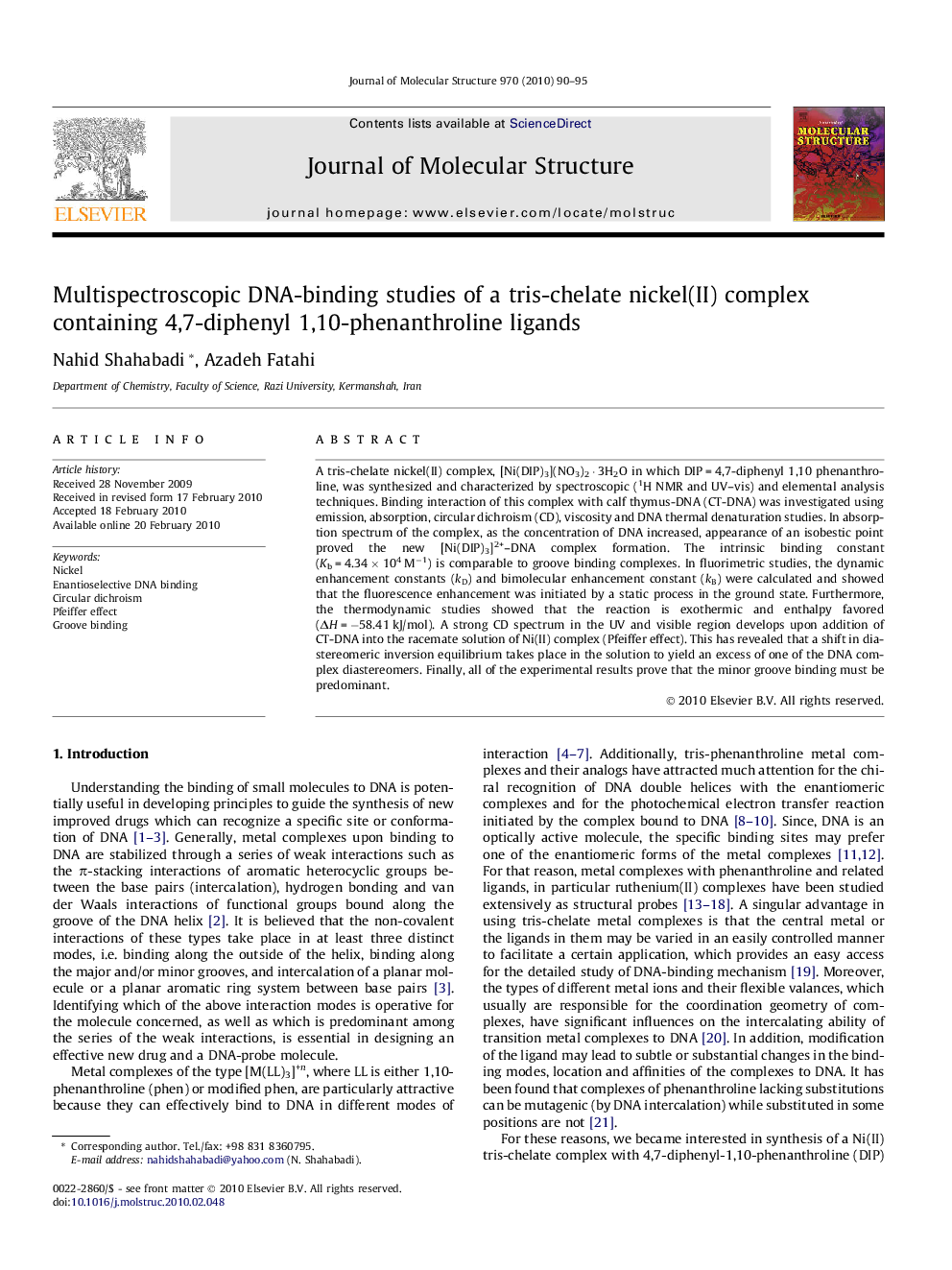| Article ID | Journal | Published Year | Pages | File Type |
|---|---|---|---|---|
| 1410015 | Journal of Molecular Structure | 2010 | 6 Pages |
Abstract
A tris-chelate nickel(II) complex, [Ni(DIP)3](NO3)2 · 3H2O in which DIP = 4,7-diphenyl 1,10 phenanthroline, was synthesized and characterized by spectroscopic (1H NMR and UV-vis) and elemental analysis techniques. Binding interaction of this complex with calf thymus-DNA (CT-DNA) was investigated using emission, absorption, circular dichroism (CD), viscosity and DNA thermal denaturation studies. In absorption spectrum of the complex, as the concentration of DNA increased, appearance of an isobestic point proved the new [Ni(DIP)3]2+-DNA complex formation. The intrinsic binding constant (Kb = 4.34 Ã 104 Mâ1) is comparable to groove binding complexes. In fluorimetric studies, the dynamic enhancement constants (kD) and bimolecular enhancement constant (kB) were calculated and showed that the fluorescence enhancement was initiated by a static process in the ground state. Furthermore, the thermodynamic studies showed that the reaction is exothermic and enthalpy favored (ÎH = â58.41 kJ/mol). A strong CD spectrum in the UV and visible region develops upon addition of CT-DNA into the racemate solution of Ni(II) complex (Pfeiffer effect). This has revealed that a shift in diastereomeric inversion equilibrium takes place in the solution to yield an excess of one of the DNA complex diastereomers. Finally, all of the experimental results prove that the minor groove binding must be predominant.
Related Topics
Physical Sciences and Engineering
Chemistry
Organic Chemistry
Authors
Nahid Shahabadi, Azadeh Fatahi,
